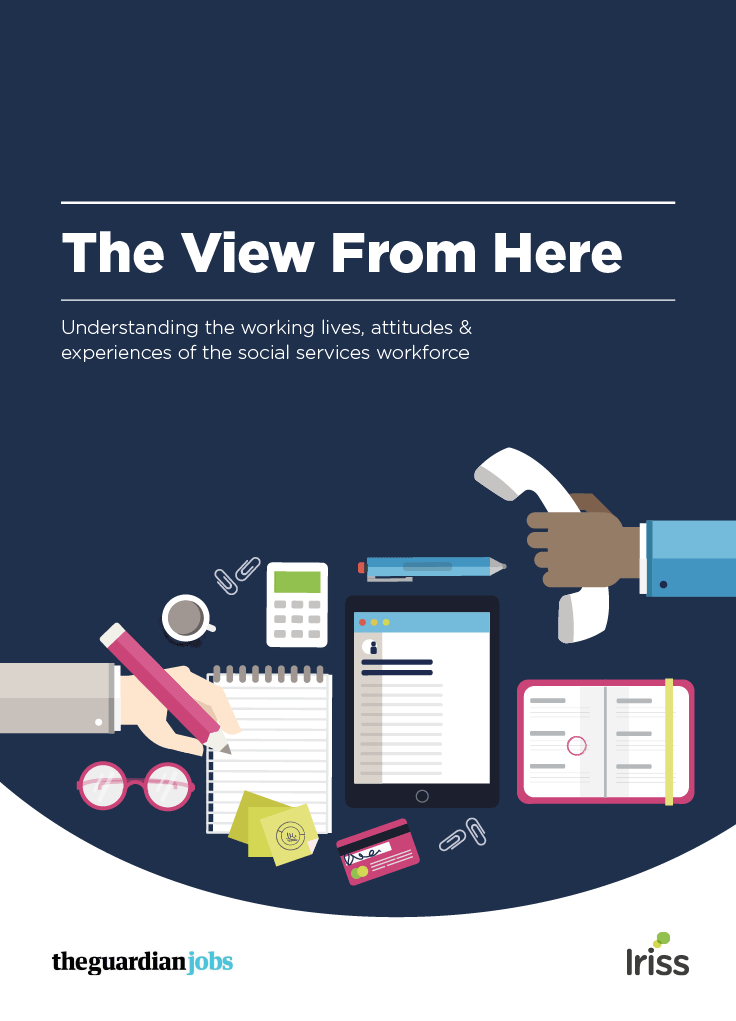
Survey
The current climate poses both challenges and opportunities for the social services workforce. In 2015, Iriss wanted to hear from people working at all kinds of levels and in all kinds of roles about the real experience of delivering care and support. To do this, Iriss, in partnership with the Guardian Jobs, put together The View from Here survey.
This is not the first time the workforce has been surveyed. There is a wealth of information available, much of which is focused on specific sub-sections of the sector, those with specific job roles, or those within individual organisations. This project sought to embrace the whole workforce but our findings are based on a higher response rate from those in statutory provision than those in voluntary and private provision. We are pleased to present the following contribution.
Workforce survey 2015 results analysis
Limitations of this data
The survey questions needed to be broad enough to relate to the entire workforce, but specific enough to attain useful results. Some questions achieved this, but not others. We’ve tried to be honest about the limitations so that you can make the best use of these findings.
Please consider the following:
- The findings are not representative of the whole workforce. The response rate from the private sector is small (6%) when compared to the size of the sector in Scotland (the private sector currently employs around 82,510 people, 41% of the total social services workforce). The response rate from the statutory sector is large (69%) compared to the size of the sector in Scotland (the public sector currently employs around 62,600 people, 31% of the total social services workforce). Please see the 2014 SSSC workforce data report for more information.
- This project attempted to understand the experiences of the social services workforce in Scotland. However the sample was predominantly made up of social workers (32%). There are a variety of other job roles that are not well represented, particularly care staff (according to SSSC workforce categories).
- The figures relating to zero hour contracts and the living wage likely to be lower than actual sector averages. The SSSC workforce data report estimates that approximately 10% of the workforce are on a zero hour contract. CCPS and Scottish Care have both highlighted the challenges of implementing a living wage in their recent reports see the CCPS Benchmarking report 2014
- 23% of respondents did not complete the final section of the survey. This drop out rate made segmentation of the results difficult. As a result, we’ve been unable to make substantive comparisons across service type and geographical area.
- Respondents were given the option to skip any question. This made it difficult to find significant differences or similarities for some of the questions. For example, we can’t compare responses from people providing adult support and protection with those who work in residential care. We also can’t compare one local authority area with another.
- The survey did not ask respondents to identify the organisations that they work for and so it is not possible to say how many separate organisations were involved.
Want to make use of this data?
We’ve included the data here without interpretation we hope that this prompts you to have conversations and ask questions. Interrogate away!
Have a conversation with your colleagues. You can use the following prompts:
- Are there any surprises in this data for you?
- Is it representative of your experience of working in social services?
- Does it prompt you to ask any more questions?
- What else should we be asking?
- Is this data useful? Should this exercise be repeated?
- How can you use this data set in conjunction with the qualitative data? What tensions/similarities do you see?